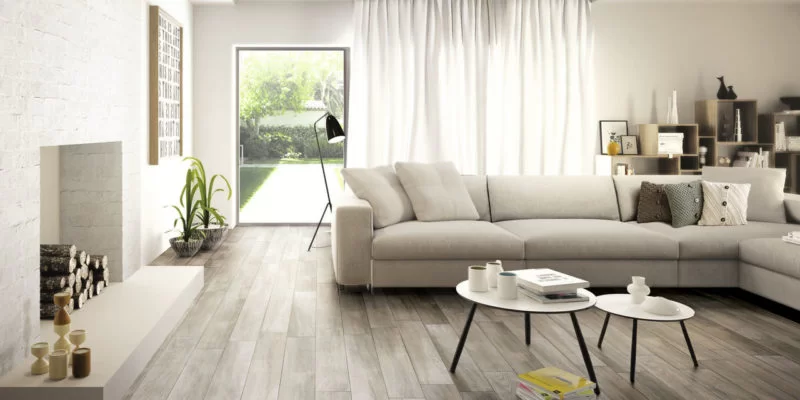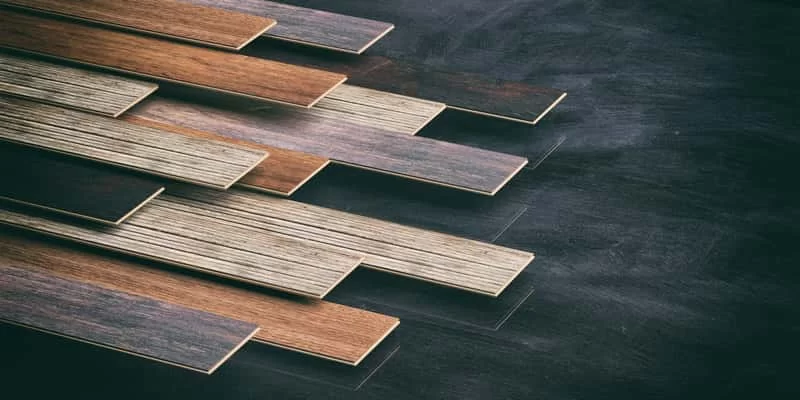
Compare linoleum and parquet
We compared two types of flooring materials — linoleum and parquet, analyzed the pros and cons of each type, which will help you make an informed choice.
Linoleum

Roll material for floor covering. Many varieties of this material are produced, which can be classified depending on the components used in the manufacture, into two types — natural and artificial.
In the production of natural linoleum, only natural, natural components are used — jute or linen as a base, wood flour, linseed oil, natural wood resin, limestone in a mixture that is applied to the base. Natural refers to expensive materials, therefore it is used to create stylish, rich interiors.
Linoleum, made from synthetic materials, is produced in several forms:
-
made of PVC (polyvinyl chloride) — made with a base of fiberglass or natural material (jute cloth or felt). This type is called heterogeneous. Another type of polyvinyl chloride linoleum is called homogeneous and is made on the basis of foamed PVC; -
from alkyd or glyptal resin — made with a fabric base; -
nitrocellulose — made from nitrocellulose mixed with fillers, which are gypsum, pigments that give color, and plasticizers; -
relin — rubber is used as a base, on which synthetic rubber is applied. Relin is used to cover the floor in auxiliary, technical rooms, excluding residential ones, as it does not meet sanitary and hygienic standards.
Different types of linoleum are used for premises of different functional purposes. To determine which type can be used to cover the floor in specific rooms, the material is marked with a two-digit number, in which the first digit indicates which rooms it is intended for: 1 — for rooms with minimal traffic, that is, utility rooms; 2 — for residential premises; 3 — for offices and public spaces; 4 — for industrial enterprises. The second digit from 1 to 4 indicates the load that the floor covering can withstand. For example, for a bedroom in a residential building, you should choose linoleum marked 21, and for an office, material marked 33 or 34 is suitable.
Parquet

Floor covering, which is performed by laying individual planks or planks of natural wood. In addition to piece parquet, there are also other types — panel, mosaic, parquet board.
-
Block parquet planks are boards made of precious woods of the highest grades of wood — oak, beech, hornbeam, ash, walnut, etc. The dimensions of the planks are 150–450 mm long, 30–60 mm wide, and 16–19 mm thick. Planks are equipped with grooves and ridges on the sides for the formation of tongue-and-groove locks during installation. -
Parquet boards are divided into two types according to the vertical structure: massive and multi-layered. Massive slats are made from solid homogeneous wood, multi-layer ones consist of several layers glued together. In a multi-layer parquet, there are usually three layers — the two lower layers, connected with the perpendicular direction of the fibers, are made of coniferous species, the upper front layer is made of valuable species of wood. -
Panel parquet assembled from separate strips, which are glued to the base, also consisting of slats and bars. Front planks are made of precious woods, the base is made of coniferous wood, aspen, birch, alder. The dimensions of the shields are from 400×400 mm to 800×800 mm with a gradation of 100 mm. Parquet planks are 20-50 mm wide and 100-400 mm long. In addition to planks, parquet boards can be covered with square elements made of peeled veneer or plywood. -
Mosaic parquet — square shields, recruited from small parquet strips, which are pasted face down on paper. After laying the floor covering, the paper is easily removed after wetting with water. Shields have the following dimensions: 400×400 mm, 480×480 mm, 520×520 mm, 600×600 mm, 650×650 mm. Parquet planks measuring 100-200 mm long, 20-45 mm wide, 8-12 mm thick. We also produce mosaic parquet with planks glued to a rubber base, which is used when soundproofing rooms is required. -
parquet board it is made three-layer like multi-layer piece strips. The two lower layers are made of coniferous wood with the arrangement of fibers perpendicular to each other, the upper, front layer is made of valuable wood species. Dimensions 1.8-2.5 m long, 140-200 mm wide, 14-22 mm thick.
Table of advantages and disadvantages
|
|
|
|
|
Linoleum
|
+ affordability;
+ ease of installation;
+ a large selection of colors and patterns, which makes it possible to use in any interior;
+ water resistance, which allows to use in rooms with high humidity;
+ high wear resistance, providing a long service life, calculated in tens of years;
+ environmental friendliness;
+ ease of cleaning and cleaning;
+ not flammable, belongs to the group of flame-retardant materials;
+ elastic, which facilitates laying work.
|
— poor maintainability, in case of local damage it is necessary to replace the entire coating;
— under a concentrated load, it can be deformed, for example, under the constant influence of office chairs with wheels;
— the basis under a covering has to be ideally aligned, differently all roughnesses will be underlined;
— when heated, it can release substances harmful to health;
— when the base is moistened, there is a danger of the emergence and reproduction of pathogenic microorganisms.
|
|
Parquet
|
+ environmental friendliness — wood is a natural natural material;
+ wide design possibilities due to different styling patterns;
+ the ability to use in rich interiors, creating a unique atmosphere of comfort and warmth;
+ good maintainability, in case of local damage, individual elements can be replaced without replacing the entire coating as a whole;
+ high strength and durability — the service life of parquet flooring can reach 50 years or more.
|
— high price;
— the complexity of the laying work — the work must be carried out by qualified specialists;
— low resistance to moisture — parquet can not be used in rooms with high humidity;
— the need for constant care with the help of special tools.
|
The main differences between materials
The main differences between the materials are as follows:
-
parquet and linoleum are made from completely different materials;
-
linoleum — roll material, parquet — consists of individual elements;
-
for laying parquet, highly qualified specialists are required; for laying linoleum, it is enough to have elementary skills in working with hands;
-
linoleum is much more diverse in design colors and patterns than parquet;
-
for laying linoleum, a cement-sand screed base is sufficient; for high-quality laying of parquet, it is necessary to arrange a subfloor from a board or plywood.
How are the materials similar?
The similarity of linoleum and parquet lies only in the fact that these are materials for flooring.
Conclusions: It is impossible to say unequivocally which is better — linoleum or parquet. Both materials have many varieties that are suitable for flooring in different rooms, so the choice should be made based on the functional purpose of the premises, interior design solutions and financial possibilities.

Добавить комментарий
Для отправки комментария вам необходимо авторизоваться.